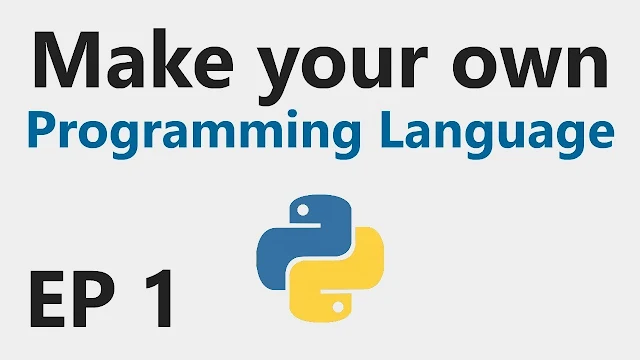Ever wondered what it takes to create your own programming language? Whether you're a coding enthusiast or an experienced programmer curious about diving into language design, this guide will break it down for you step by step. At Jacobisah Programming Hub, we’re all about empowering developers to explore new horizons, and creating your own programming language is the ultimate creative coding challenge.
Why Create a Programming Language?
Before we dive into the "how," let’s address the "why." Why would anyone want to create a new programming language?
Solving a specific problem: Sometimes, existing languages don't fit the unique requirements of your project.
Learning experience: Designing a programming language sharpens your understanding of computer science concepts like compilers, interpreters, and syntax parsing.
Creative freedom: A programming language is like a new art form for coders. It’s your chance to create something that reflects your vision and values.
At Jacobisah Programming Hub, we’ve seen learners evolve by experimenting with their own languages. It’s not just about code—it’s about innovation.
Common Concerns When Starting
You’re probably thinking:
"Do I need to be a genius to do this?"
"What tools do I need?"
"Will my language even work?"
The truth? You don’t need to be a genius. You just need curiosity, patience, and the right guidance. And no, your language doesn’t have to be perfect or revolutionary—it’s about the process, not perfection.
Step 1: Define the Purpose of Your Language
Ask yourself these questions:
What problem does my language solve?
Who is the target audience?
What features make my language unique?
For example, let’s say you want to create a language for kids to learn programming. Your focus would be on simplicity, fun syntax, and immediate visual feedback.
Step 2: Learn the Basics of Compilers and Interpreters
A programming language needs a way to execute commands. This is where compilers and interpreters come in:
Compiler: Translates code into machine language (e.g., C++, Java).
Interpreter: Executes code line by line (e.g., Python, JavaScript).
Tools to explore:
ANTLR: A tool for generating parsers.
LLVM: For building compilers.
Python: Great for writing interpreters due to its flexibility.
Step 3: Define Your Syntax and Rules
Every language has its own "grammar" that determines how code is written. This includes:
Keywords: Reserved words (e.g.,
if,else,while).Operators: Symbols for operations (e.g.,
+,-,=).Data Types: Types of variables (e.g., integers, strings).
Example:
If you’re designing a language for math enthusiasts, you might create a simple syntax like this:
add(5, 10) # Outputs 15Keep it simple and intuitive—you’re not reinventing the wheel here.
Step 4: Create a Lexer and Parser
Here’s where things get technical:
Lexer: Breaks the code into "tokens." For example, the line
print(5)might be tokenized intoPRINT,(,5, and).Parser: Ensures the tokens follow your language’s rules.
You can use libraries like:
Ply (Python Lex-Yacc) for writing lexers and parsers.
Bison for C-based parsing.
Step 5: Write the Interpreter or Compiler
If you’re writing an interpreter, you’ll need to:
Read the parsed code.
Execute instructions based on the rules you’ve defined.
For a compiler, you’ll translate the parsed code into another language or machine code. This step can be tricky, but it’s also incredibly rewarding.
Step 6: Test and Debug
No language is perfect on the first try. Create a set of test cases to ensure your language behaves as expected. Use debugging tools and ask others to try it out.
At Jacobisah Programming Hub, we recommend starting small—write a program in your language that prints "Hello, World!" and work up from there.
Relatable Example: My Own Journey
When I first started Jacobisah Programming Hub, one of my personal projects was creating a minimalist language for generating random poetry. It wasn’t perfect, but it taught me the value of persistence and feedback. Today, it’s a great story to share with my students—and proof that creating a language is possible for anyone.
Quick Tips for Success
Keep it simple: Avoid overloading your language with features.
Document everything: A language without documentation is like a map without labels.
Get feedback: Share your language with others and listen to their suggestions.
Iterate often: Your first version won’t be your last. Embrace change.
Tools and Resources
Here are some free tools to get you started:
Replit: Great for experimenting with code online.
GitHub: To share your project and collaborate.
Codewars: Practice problems to understand how other languages work.
Share Your Progress
Have you started creating your programming language? Share your journey in the comments below! I’d love to hear about your challenges and breakthroughs. At Jacobisah Programming Hub, we believe in celebrating every step of your coding adventure.
If you found this guide helpful, share it with a friend or on social media. Let’s inspire more developers to take on this exciting challenge!
Stay Connected
For more programming insights, tutorials, and community support, follow Jacobisah Programming Hub. Let’s code the future, one project at a time!

Comments